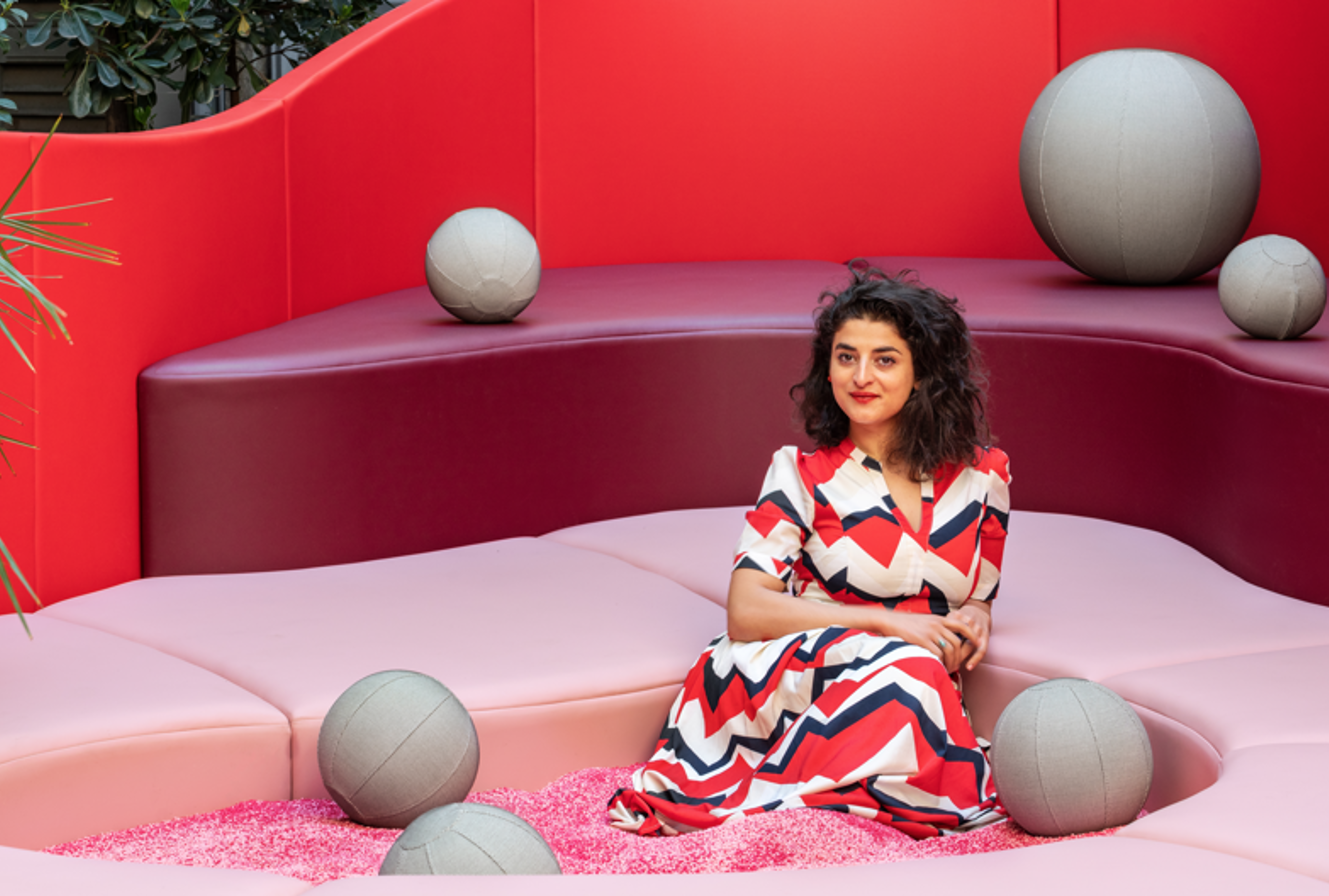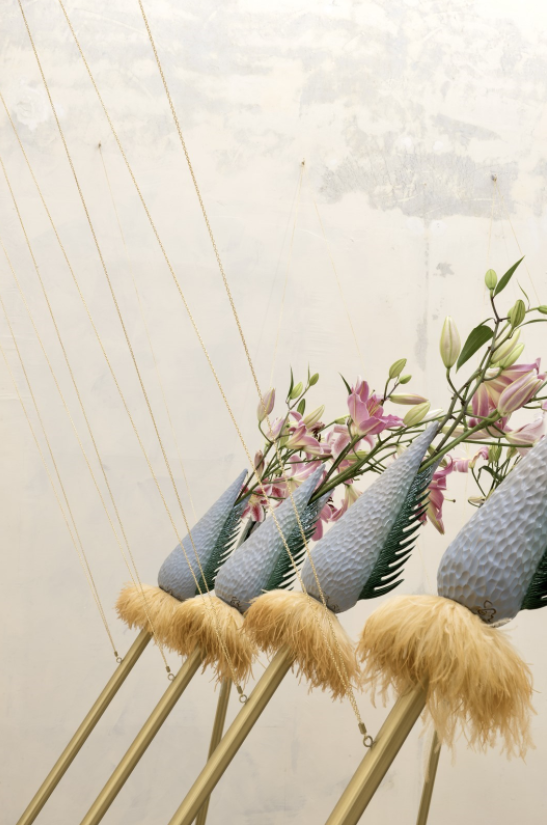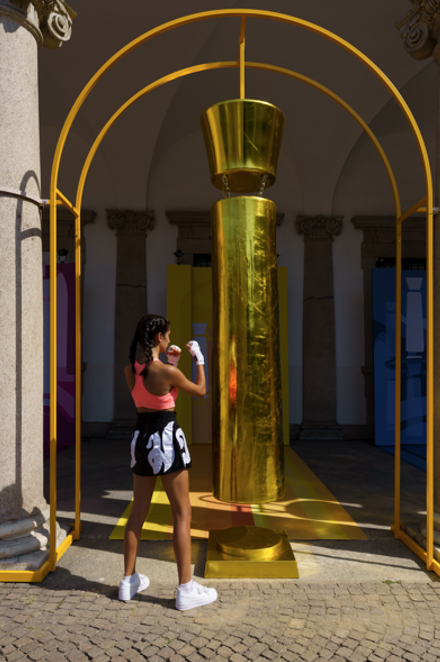Carolina Drago in Conversation with Italian Designer, Sara Ricciardi
Sara Ricciardi.
Cicero described Aristotle's s writing style as an aureum flumen, a golden river, to celebrate his outstanding works and the vivid, flourishing way in which he conveyed them. This metaphor perfectly introduces the interview with the Italian designer Sara Ricciardi, who graduated in Product Design from Nuova Accademia di Belle Arti (NABA), Milan before continuing her rock-solid academic career in Istanbul and New York. Over the last few years, Ricciardi has been involved in important exhibitions, festivals and artist residencies. She is a collaborator of 5Vie design district in Milan and lecturer of Social Design at NABA.
This interview took place on the phone on an early Saturday morning. I was a bit sleepy in a chilling London. Ricciardi was already busy, speaking on her way to her trusted marble supplier somewhere in the countryside surrounding Milan. However, she managed to bring me into her own world of projects and ideas, which she drew with generous passion and mesmerising narrative skills.
MADE IN BED’s Design Contributor Carolina Drago speaks to Sara Ricciardi about her research, which is a constant reflection on shapes and the worlds that label them. Versatile and restless, with curiosity as a “trademark”, Ricciardi embodies the quintessential creativity.
Detail from the Semina exhibition.
Carolina Drago: One of your mottos is “Form follows poetry”, which ironically echoes the modernist design mantra “Forms follows function”, while also expressing your original approach. In your opinion, what is the role of creativity today?
Sara Ricciardi: Poetry is closely connected to the verb “to make” as it springs from the Greek word poièo, “I make”. Different from prose, which has a more methodological and pre-fixed structure, poetry flows naturally and arrives to everyone, without scheme. Design has an emotional role as we live in an eternal narration; Everything we create is a form of narration, a shared one. It’s part of our being human, which has no pre-fixed scheme. “Normal” comes from norma, the set square, the tool that indicates the perfect 90° angle, that does not exist in nature. So, by trying to conform and create shared methodologies and strict rules, we do something intrinsically unnatural. However, if you apply a scheme while activating the “poetry mode”, this pre-fixed “project grid” is not the ultimate goal anymore. It becomes a tool for the creative process. This helps to make poetry flow and dance. It discloses a new way of seeing, radically different from the socially expected one.
CD: How does creation happen?
SR: It’s difficult to say when a project begins because it melts with daily life, my experiences and the people I meet. I always write and draw those moments that I call “epiphanies” and I build on them. For instance, my last exhibition Semina [on show at Contemporary Cluster, Rome until November 20th] originated from a painful moment in my life. I remember starting to draw the weeping. After a while, I realised that those tears had the same shape as seeds. After all, in Italian pianto is both the past participle of “to cry” and the present simple of “to plant”. I found this connection and gave it a meaning. From the sorrow, something good could flourish. My role is to give shape to this idea. Linguistics itself is a creative tool. It helps to mould and expand your thinking, before translating it into tangible thing. This is the connecting-the-dots process. You get the result afterward, liberating yourself from schemes and expectations.
Pimp My Aristocracy swing.
CD: Building on this, do you think that design and art are not that different?
SR: Of course, and you can include as many other fields as you wish. Design, literature, even bakery are forms of art. These categories are just the vehicles to convey and give shape to an idea or emotion. Be it a painting or a spectacular water-pumping device, it doesn't really matter. At the core of each is this need and generosity to feel, and to express this feeling to other people in a stylised manner or a more mysterious one. It is something intangible, a sort of energy; Inspiration lies here. How we translate it into phenomena, which is the visible stuff, creates the different category of adoption.
CD: What are your sources of inspiration and role models?
SR: Everyday I look for new models. They are perpetual and cross-generational. For instance, the light-touch ingenuity of my 5-year-old niece and the way she sees the world - with no fixed schemes - always illuminates me. Also, my school teachers such as Alessandro Guerriero [founder of Alchimia Group] were crucial. They never gave answers, but provided students with the keys to ask questions, starting from ourselves, which is crucial. We are the results of all the people and places we interact with from the very beginning. My father is a philosophy professor, but I also learn everyday from my students. I am grateful to all of them, including the ones with divergent opinions. Nature and literature are great teachers as well. For instance, I started my day reading Blaise Pascal’s Pensées and I was overwhelmed. This is essential—to constantly search and be surprised.
Hourglass, Ora Collection.
CD: You have always collaborated with important brands, such as Starhotels, and international design projects. What is your relationship to the market?
SR: Marketwise, my business plan is configured with many different outputs. I have galleries I work with but I also have my own studio. I do partnerships and plan performances financed by foundations and associations. It all depends on the project. I do not need a gallerist or any other insider to validate my work, which is different from the art world. Sometimes I finance and produce my own creations, sometimes I work with galleries that are in charge of production. Nevertheless, there is always a form of hypocrisy that creative jobs are fun. As a result, many people still expect to get it for free or tend to underprice it, while simultaneously trying to speculate or leverage any financial aspects. Asking for the right amount of money is not shameful. It’s a way to value one's work and profession. After all, everybody benefits from a good project!
CD: New tech is helping young designers access the audience, bypassing market intermediaries such as galleries. From this perspective, how does technology affect your work?
SR: Everything is so fluid and fast, like spreading the news and showcasing one’s work, which is good. As much as for younger designers, the internet and social media are necessary for everyone in the creative profession. Needless to say, a sound work ethic must be adopted, which is why I would never sell directly to a purchaser a creation if it was previously consigned to the gallery I am collaborating with.
High Intensity Design Training: Working Out With One’s Past.
In collaboration with NABA Students. Università Statale di Milano – Fuorisalone 2021.
CD: You are a university lecturer in Social Design. What is it and why does it matter? Isn’t it in a way a reaction to the increasingly pervasive AI and technological devices?
SR: The sphere of human interaction has always attracted me. As a social designer, I teach how a designer can act as a facilitator of human interactions. Design still means outlining projects, but the focus is now on society and human beings. At university, I also studied theatre and performative art. I come from Southern Italy, so people and communities are in my DNA. Artificial Intelligence and modern technologies are not against us and they never will be, as they are the ultimate way to ease and accelerate thinking, which is human. Through social design, I exploit these channels to trigger and create human interaction, which is at the base of knowledge and improvement. We do not have to be scared by machines [laughs], it’s just a matter of understanding them. We need to adopt the same curious and surprise-driven attitude a child would have. Once again, my 5-year-old niece can teach something to all of us!
Thank you, Sara!
Images courtesy of Sara Ricciardi Studio.
To discover more about Sara’s work, you can visit her website or follow her on Instagram.
Carolina Drago,
Design Contributor, MADE IN BED






